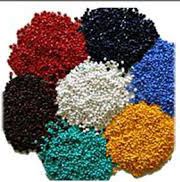A frequent problem that design engineers face when trying to fit a product into an off-the-shelf enclosure is the placement of PC board bosses. They never seem to be in the right place to secure the circuit board, or else they are in the way of other components.
Knowing this to be an ongoing concern, SIMCO has developed several solutions for these problems.
The PMB125 is a universal mounting boss that is designed to bond securely within an enclosure with MEK or other bonding agent. These bosses can be located wherever needed for board placement. The board is held in place with easy to use push on fasteners or removable spring clips.
Some SIMCO enclosures can be molded with or without PC board mounting bosses. The DISCOVERY Series is a good example. These handheld cases have provisions for board placement between the screw bosses, leaving open space within the units for more circuitry. However, if additional mounting boss provisions are required the cases can be ordered with molded in PC board bosses.
For those SIMCO enclosures that do not have the option to be molded without PC board bosses, such as the CHALLENGER Series, SIMCO can remove any bosses that are in the way.
Whatever your assembly requirements might be, why not let SIMCO assist you? Sometimes all it requires is a simple tooling modification. Contact SIMCO’s Engineering Department for more information.
PC BOARD SCREWS
Once the PC board mounting boss and board placements are determined, a means to secure board to boss is required. Again, SIMCO offers a ready solution; a special thread forming Plastite® screw designed especially for thermoplastics.
The Plastite® PC board screws feature a steep helix angle that seats the screw in half as many revolutions, to reduce assembly time. The narrow threads and steep angle penetrate deeper into the plastic reducing stripping or pulling out The TriRoundular design minimizes radial stress and the boss failures that stress can cause.
The Plastite® screws are used to assemble all SIMCO enclosures. They eliminate the need for metal inserts and are cost effective. The Phillips head zinc screws have a baked clear chromate finish to prevent rusting.
Order number for the PC board screws is S14. The #4x .250 screws are packaged in bags of 100. To order contact SIMCO’s sales department.
Send today for a copy of the SIMCO Product Selection Guide describing the many SIMCO enclosures and accessories that are available from stock. Samples are available on request.
 With the development of custom plastic enclosures and their popularization as an option, packaging electronics and other items and protecting them adequately has been taken to a whole new level. If you own a company that needs enclosures with certain specifications and dimensions to fit its products perfectly, there is a high chance that you may not find readymade ones with the exact specifications you require. However, with the customization options available, your enclosures can be produced in such a way that they satisfy all your demands.
With the development of custom plastic enclosures and their popularization as an option, packaging electronics and other items and protecting them adequately has been taken to a whole new level. If you own a company that needs enclosures with certain specifications and dimensions to fit its products perfectly, there is a high chance that you may not find readymade ones with the exact specifications you require. However, with the customization options available, your enclosures can be produced in such a way that they satisfy all your demands.




